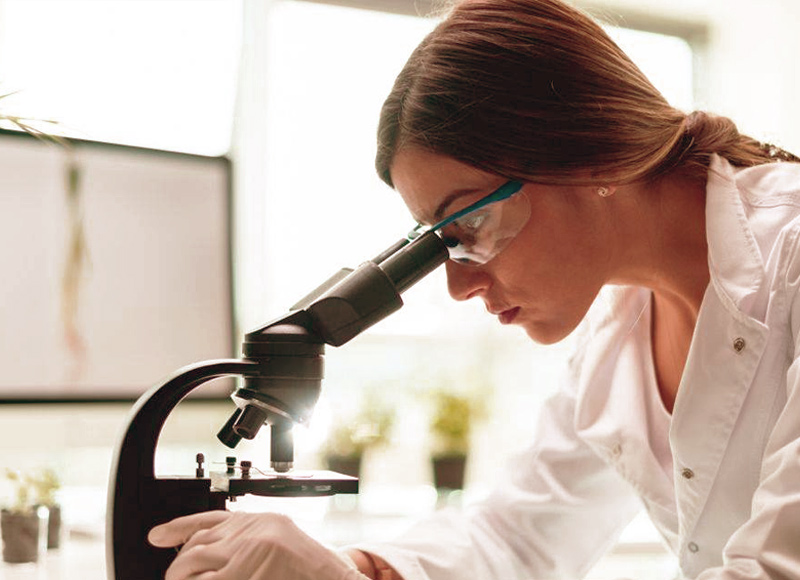5 April 2024
How Today’s Biotech R&D Will Impact The Future Of Life Sciences

Today’s biotech developments are not focused on incremental change. Instead, the R&D being explored now has the potential to reinvent our approaches to life sciences, medicine, and healthcare.
Biotech developments in the life sciences industry were rife from the 1970s to 1990s. This generation of innovation saw scientists pick a lot of low hanging fruit, but now we’re left with the more complex challenges to tackle.
Funding continues to flow into the biotech domain in support of medical advancement and what we’re seeing come out of it are incredible leaps and bounds in innovation.
Below, I explore the trajectory of these innovations and my vision of what this could do for future generations.
Harnessing the power of biology
The period between the 1970s and the 1990s saw biotech rise in the world of life sciences. Scientists began to harness biology to create medical solutions in earnest. Using microbes and microbial fermentation, many products were created to treat diseases and empower more comprehensive testing, such as PCR testing to identify infectious diseases.
Moving into the 90s, the power of the genome became a focus. There was a real push for using whole genome sequencing and significant investment made to turn this into a reality.
As the first generation of tools, these advancements were ripe for exploitation and were relatively quick to develop. Now, creating the next generation of tools is a harder task that requires bigger leaps and bounds to be made.
The focus is not on making incremental improvements to what’s come before, but on solving entirely new problems and initiating the next phase of life sciences tools. This is a challenge, yes, but because of the significance of these challenges, the biotech industry is receiving healthy investment.
In addition, real-world necessity is driving progress. For example, the Covid-19 pandemic accelerated innovation in mRNA vaccines.
The focus for biotech today
Now, the industry has turned its sights to other possibilities powered by the genome, such as genome editing, next-generation gene sequencing, and new therapeutic approaches. Overall, there’s a trend of scientists leaning into the natural workings of the body in order to achieve breakthroughs in biotech.
“Tailwinds from sustained growth in funding and research are leading to a proliferation of scientific publications and new patents, with breakthroughs across disciplines including genetics, immunology, and cell biology. In parallel, technological advancements, such as the use of artificial intelligence (AI), are leading to faster drug development timelines and the creation of more personalized therapeutics.”
– Goldman Sachs
Working with the body
Scientists today are using the human body’s natural processes to inform and catalyse innovation.
Therapeutics is a perfect example. The body’s natural immune response to fighting diseases is one that is a result of generations of evolution. Therefore, solutions like immunotherapies (e.g. CAR T-cell therapy) are designed to work with, and improve, these systems.
This is a theme I expect to continue, and for more of the next generation of approved drugs and therapies to draw upon our knowledge of the body’s natural functions.
Looking at the whole picture
Equally, the more we know, the better these solutions can be. Like whole genome sequencing, understanding biological processes from start to finish will be invaluable for effective R&D.
A reaction in one part of the body is not an isolated event. It will undoubtedly have an effect on other parts of the body and other critical functions. Understanding how these relationships work, and how one change triggers another and another, is imperative to improving our decision making.
While these chains of events may not be directly related, monitoring them gives us a fuller picture of how the body behaves, regulates itself and fights off diseases.
The development of monitoring tools is well under way and as they become more comprehensive, medical approaches can more effectively complement the body’s natural responses.
The advent of AI
The advent of AI is another valuable accelerant for biological discovery. It could be used to support exploration of new structures for protein or enzyme formulation, bioactive compounds or new therapeutics for a start.
This is just the tip of the iceberg. With appropriate training and testing, AI could become as commonplace a companion to scientists, academics and pharmaceutical companies as any statistical analysis tool.
For example, at Cocoon, we harness the power of nature to create an expression platform that is uniquely capable of expressing complex, or ‘impossible’, proteins. AI could become the first stage of this process. It could identify which protein is needed for a certain application, before we quickly express, build and test it.
Progress through collaboration
“Going forward, we believe the next decade will see an acceleration of some of the critical trends that have shaped pharma strategies and pipelines historically. This will create challenges for incumbents, but opportunities for innovative new companies and technologies to come to the forefront.”
– Goldman Sachs
I believe a mindset shift will help to bring these aspirations into reality. What we are doing at Cocoon is just one tool in the next-generation toolkit of biotech transformation. We are exploring new ways of producing proteins that allow us to experiment quickly and at low costs that can be integrated into research funding.
We’re accelerating the availability of a key component in this overarching theme of biological innovation in life sciences. But open collaboration is needed to realise the final solutions. By working with partners, demonstrating case after case, we aim to facilitate progress along the steep, and often challenging, innovation curve facing the life sciences industry.
We hope there will be a continued evolution of this mindset – one that will encourage large companies, start-ups, academics and researchers to work together to find the best possible solutions for the future of healthcare.
Head over to our website to learn more about our innovative technology for life sciences.



